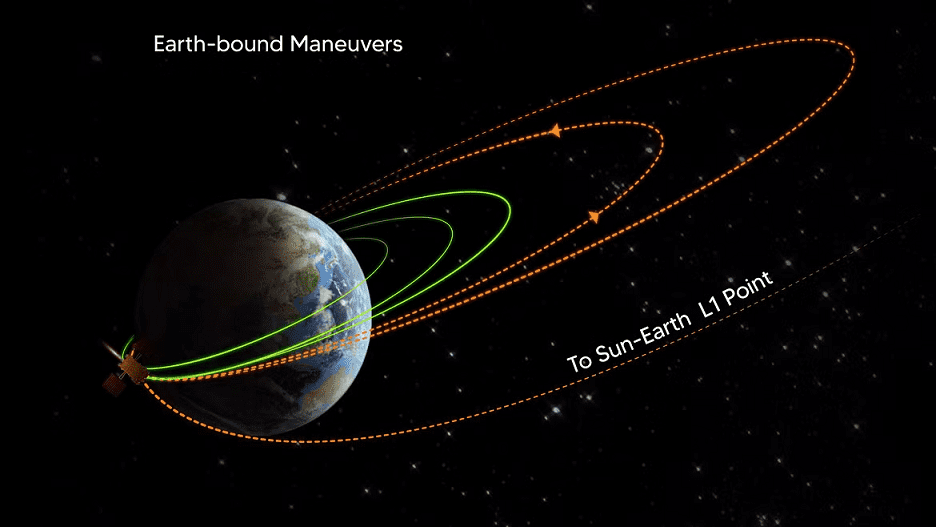
In a historic achievement for India's space exploration endeavors, the Indian Space Research Organisation (ISRO) has successfully positioned the Aditya-L1, the country's first solar observatory, into a halo orbit around the first Lagrangian point (L1) of the sun-earth system. This significant milestone comes 127 days after the observatory's launch from the Satish Dhawan Space Centre in Sriharikota on September 2, 2023.
The Lagrangian point L1, located approximately 1.5 million kilometers from Earth, is a pivotal spot in space where the gravitational forces between the Earth and the Sun are balanced, allowing a smaller object like the Aditya-L1 to move continuously with them. This strategic positioning enables uninterrupted observations of the sun, offering scientists unprecedented insights into its various layers and phenomena.
Weighing 1,480 kilograms, the Aditya-L1 carries seven advanced payloads designed to study different aspects of the sun, including its photosphere (visible surface), corona (outermost layer), and chromosphere (the atmospheric layer in between). Equipped with electromagnetic and particle detectors, these payloads aim to unravel mysteries surrounding coronal heating, space weather, magnetic field measurements, and Coronal Mass Ejections (CMEs), which are eruptions of plasma and magnetic fields from the sun's corona.
India creates yet another landmark. India’s first solar observatory Aditya-L1 reaches it’s destination. It is a testament to the relentless dedication of our scientists in realising among the most complex and intricate space missions. I join the nation in applauding this…
— Narendra Modi (@narendramodi) January 6, 2024
The observatory's primary payload, the Visible Emission Line Coronagraph (VELC), developed by the Indian Institute of Astrophysics in Bengaluru, is specifically designed to study the solar corona and the dynamics of CMEs. Other instruments, such as the Solar Wind Ion Spectrometer (SWIS), have already commenced their operations, marking significant progress in the mission's objectives.
In a groundbreaking moment, the High Energy L1 Orbiting X-ray Spectrometer (HEL1OS), one of Aditya-L1's payloads, captured the first high-energy X-ray glimpse of solar flares in November. Moreover, the Solar Ultraviolet Imaging Telescope (SUIT) released full-disk images of the sun in December, showcasing the observatory's capabilities in providing detailed and comprehensive solar observations.
Aditya-L1 has now joined the elite group of operational spacecraft at L1 in the sun-earth system, including WIND, ACE, and DSCOVER from NASA, as well as SOHO, a joint mission of NASA and the European Space Agency. This collective presence at L1 enhances our understanding of the sun and space phenomena, fostering international collaboration and knowledge-sharing.
As India's Aditya-L1 embarks on its mission to unravel the secrets of the sun, its successful placement in orbit around L1 signifies a monumental achievement for the nation's space exploration capabilities. With the potential to revolutionize our understanding of solar activities, the Aditya-L1 solar observatory marks another significant stride in India's pursuit of scientific excellence in space exploration.